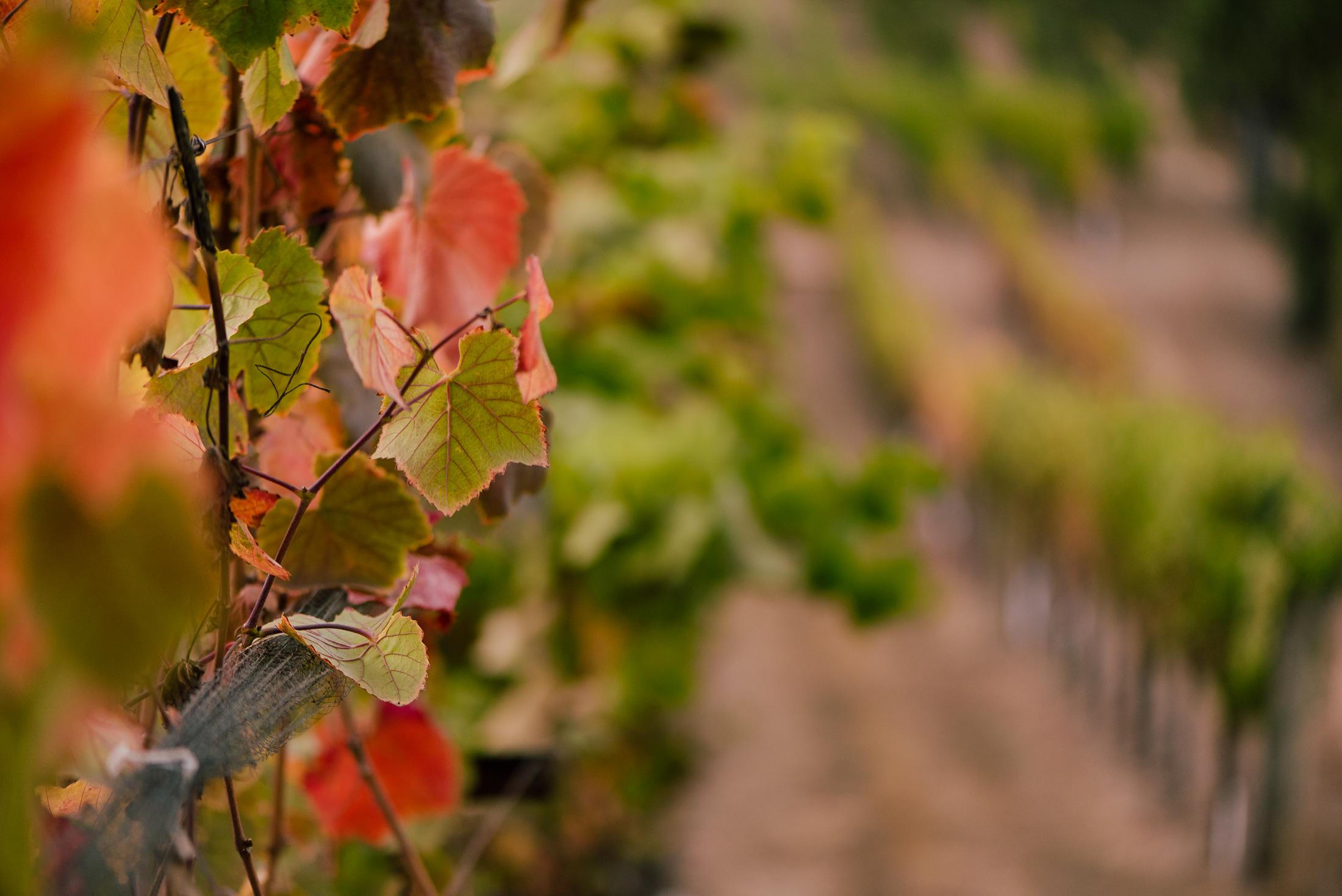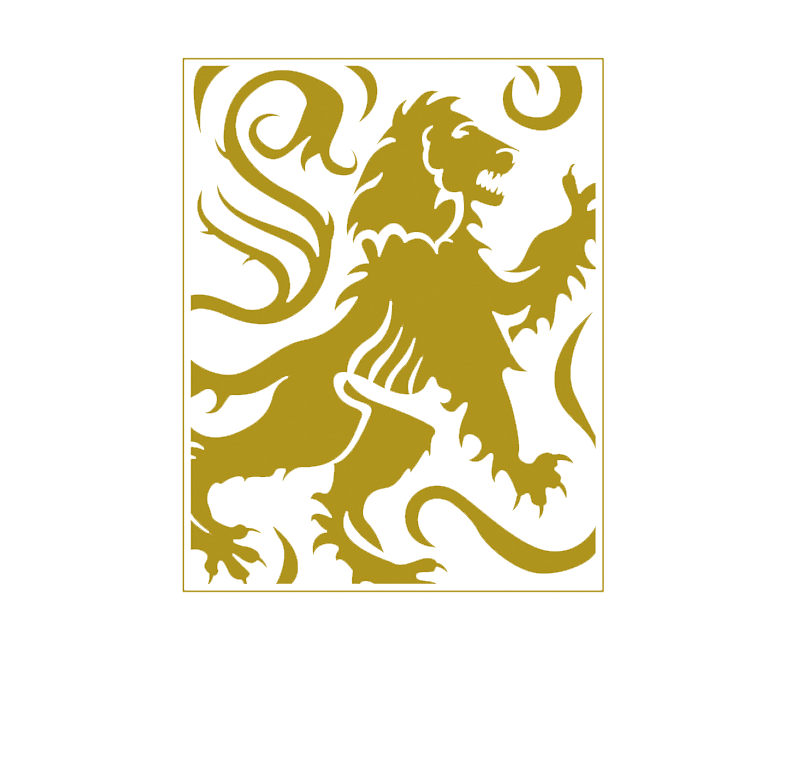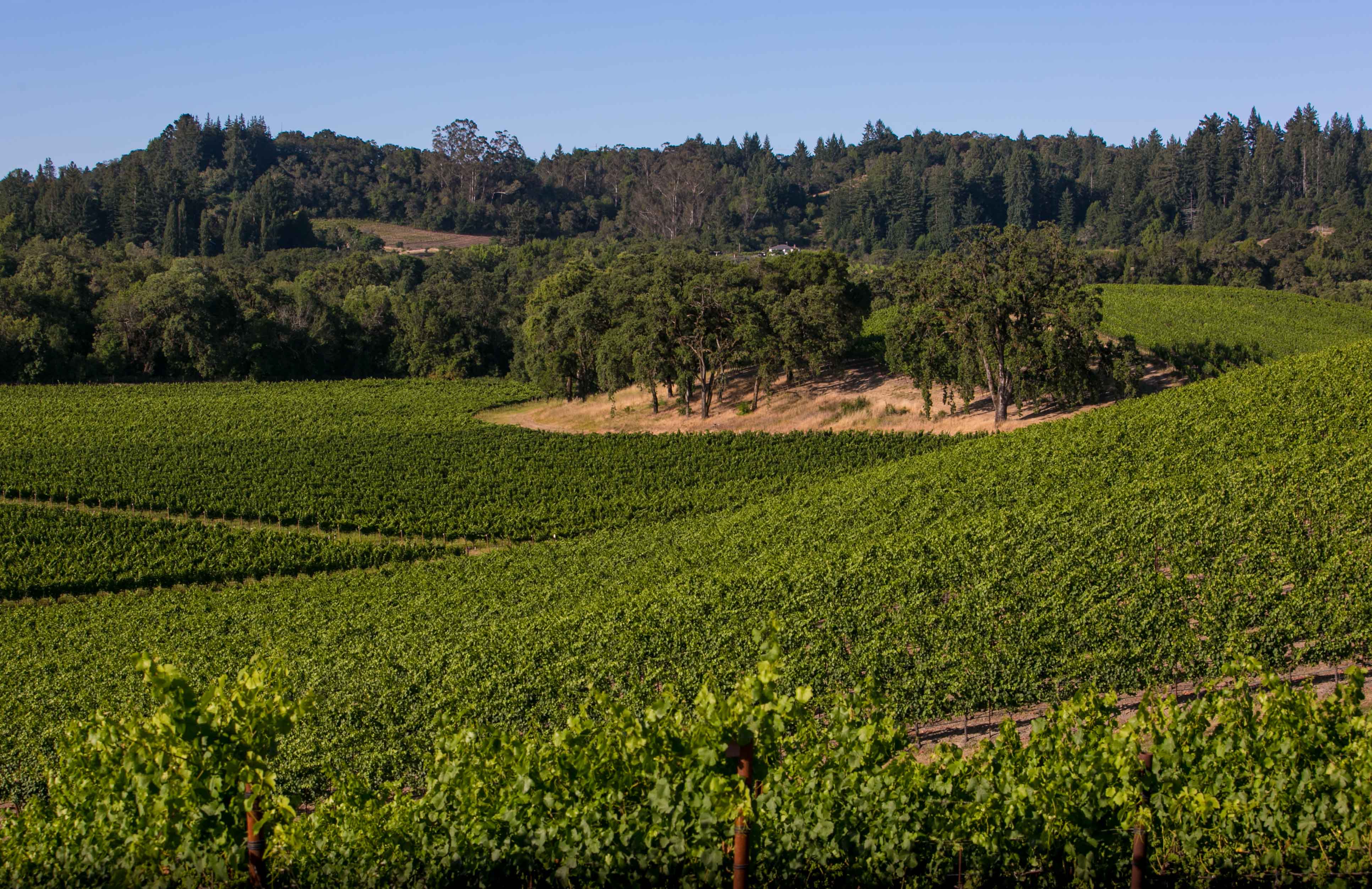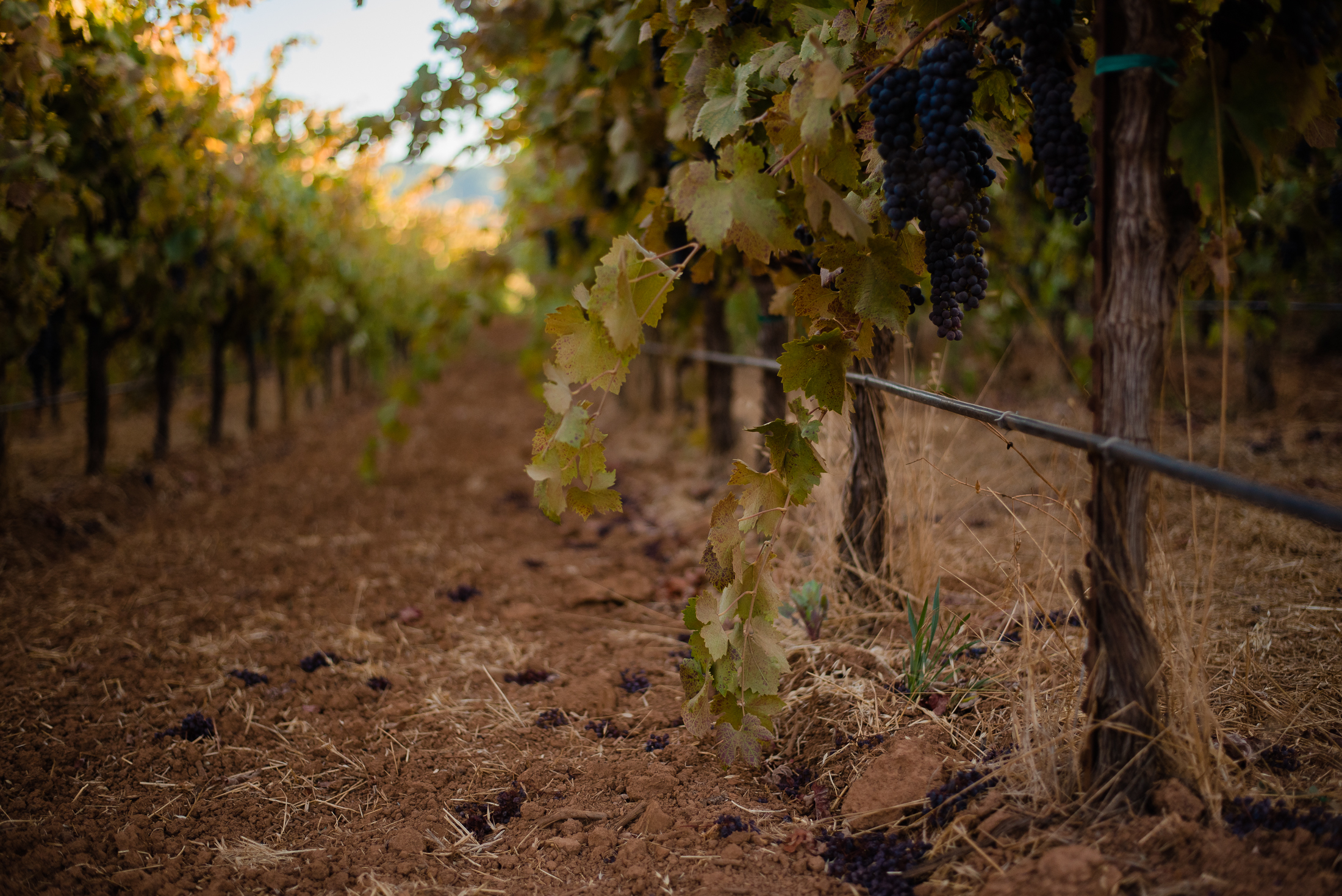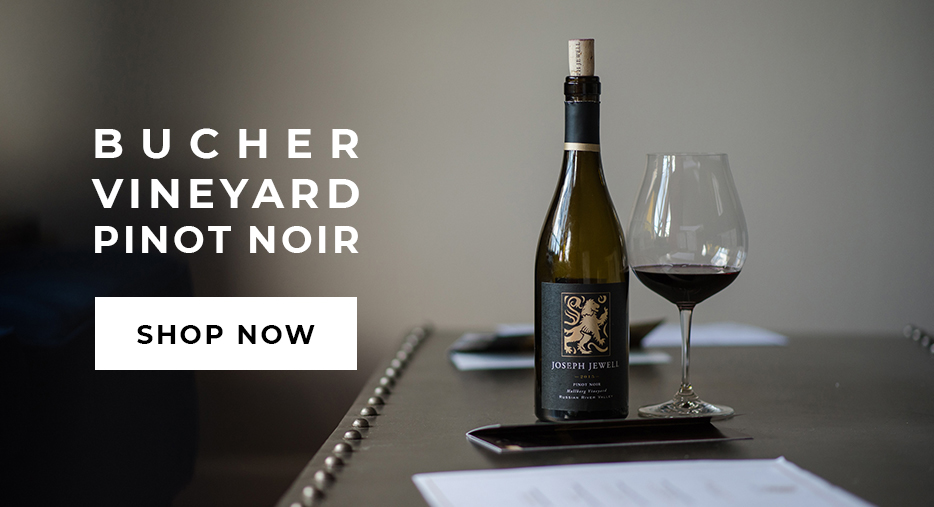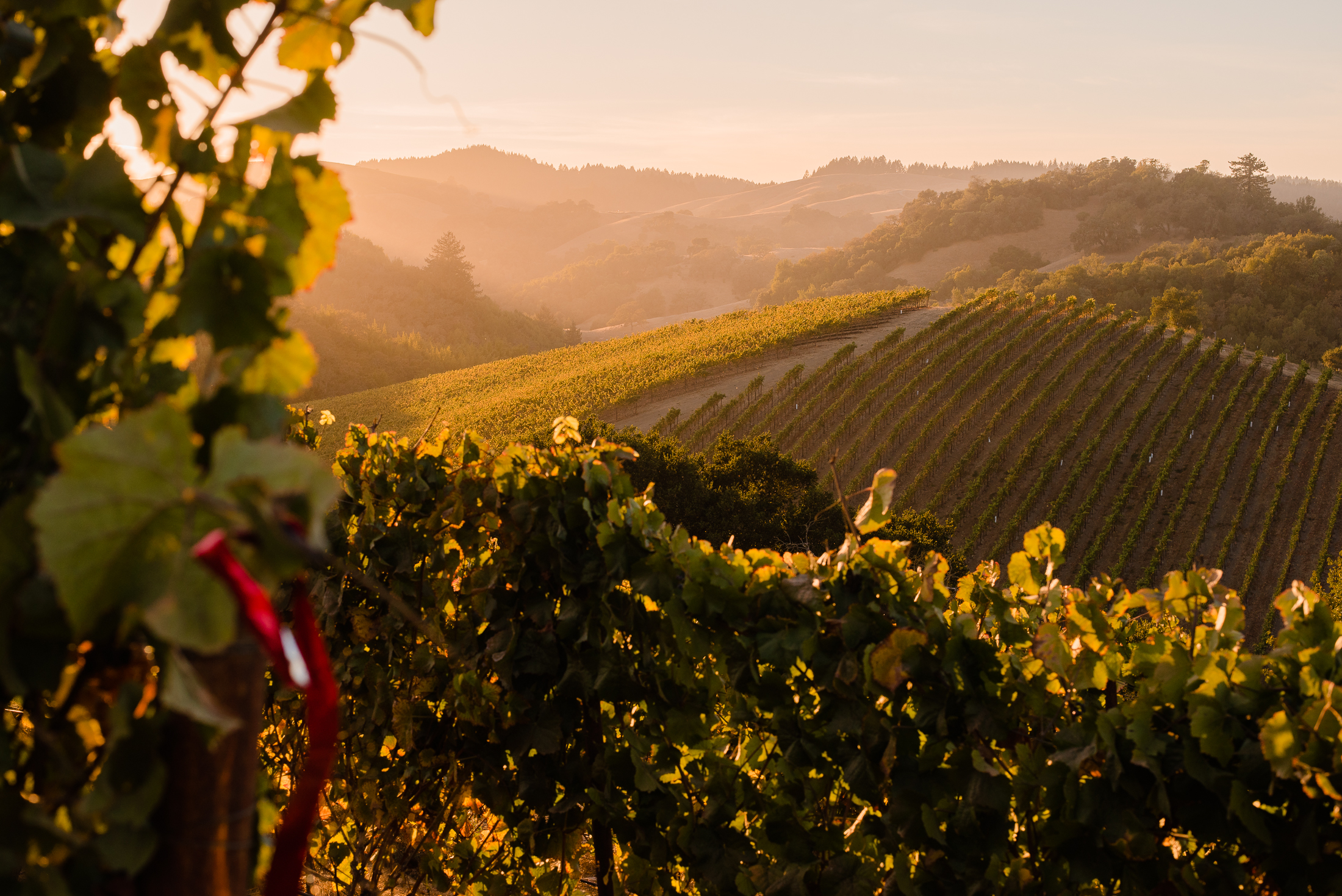
08 Sep Exploring Pinot Noir of the Bucher Vineyard on Westside Road
Just outside the town of Healdsburg, the 38 sustainably farmed acres of the Bucher Vineyard produce elegant and nuanced Pinot Noir for our single-vineyard bottling of the same name.
Owner and farmer John Bucher has made quite a reputation for himself as a winegrower in the Russian River Valley, with the likes of Williams Selyem lobbying for fruit annually from his Westside Road estate that overlooks the Russian River. Being neighbors with the coveted Rochioli Vineyard to the south, it is easy to understand why the grapes from Bucher Vineyard are held in such high regard. We’ve been sourcing fruit since 2014 from a steep hillside block on the west edge of the property along with a smaller block towards the bottom of the slope adjacent to Westside Road.

Bucher History
As a second-generation farmer, John grew up on the Westside Road property before it was ever a notable vineyard. John’s parents, Joe and Annemarie, purchased the land in 1958 after an adventurous immigration from their home village of Luzern, Switzerland where Joe grew up working a dairy farm with his father and brother. With the Russian River Valley abundant in fertile land for cattle, Joe saw an opportunity to continue the work he knew best.
The 38 acres and 50 head of Jerseys, Holstein and Guernseys cattle that came with the property was a part of the White-O-Ranch dating back to the 1930’s. Over time, Joe and Annemarie grew the herd to over 650 head, raised on a diet of organic alfalfa and grain. It wasn’t until John came back to the land after attending UC Davis in 1984 that he began looking for opportunities to diversify income streams. After researching for several years, the first grape vines were planted in 1997 with additional plantings in 1998 and the decade that followed.
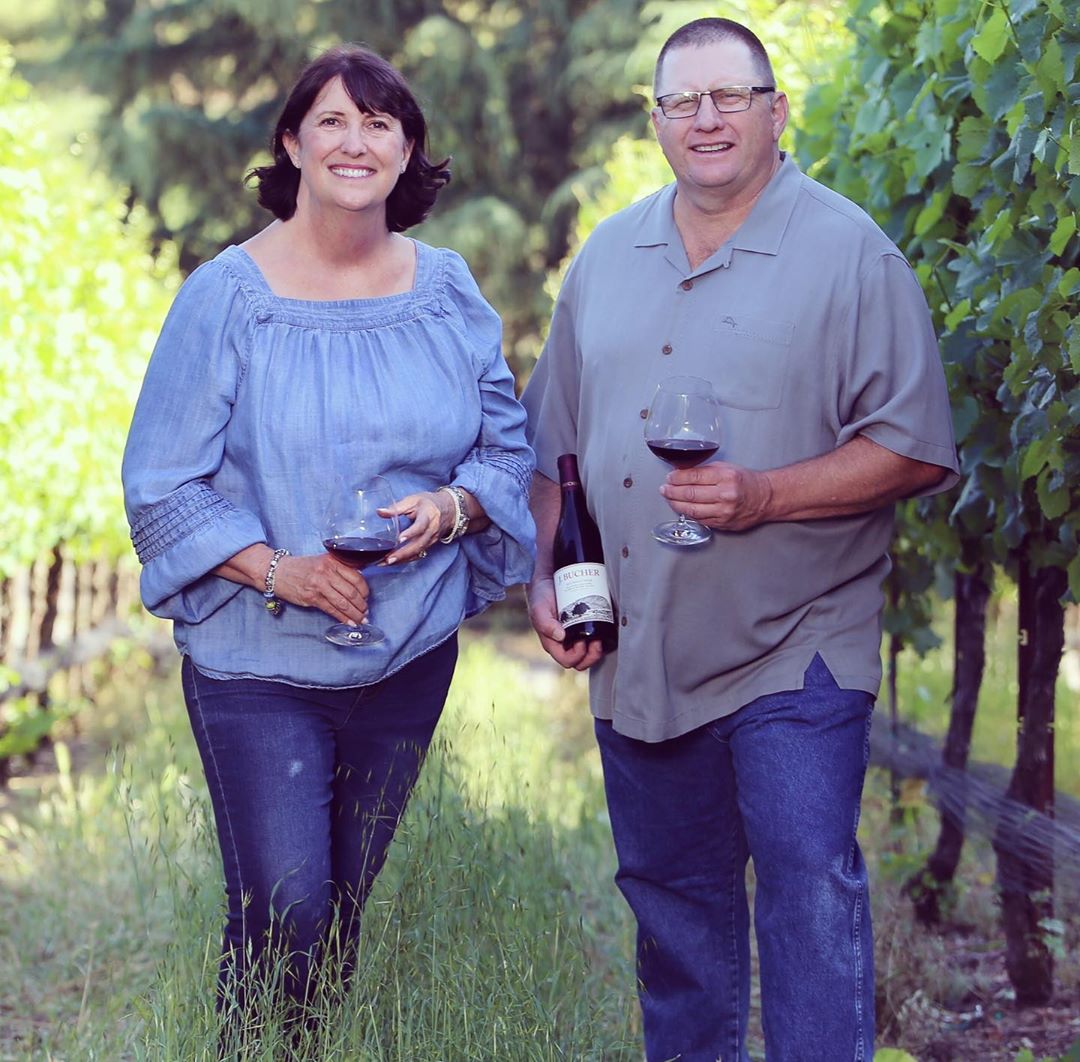
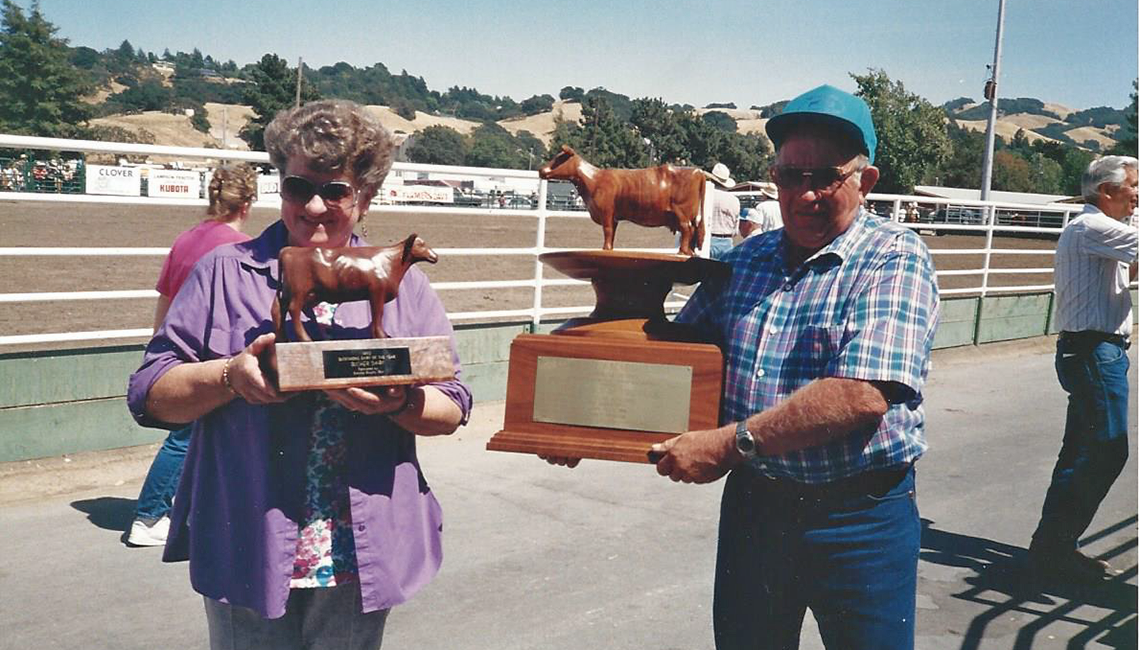
Soil
The use of Pinot Noir grapes to successfully create elegant wines that age well is largely impacted by the soil. The more porous a soil is, (water drains through easily) the more tannic a wine will be, generally speaking, and the less porous a soil is, (the soil retains water more) the less tannic a wine will be. To age wine you need a balance of higher levels of acidity and tannin as they both work in harmony to protect against oxidation.
To age wine you need a balance of higher levels of acidity and tannin as they both work in harmony to protect against oxidation.
The 38 sustainably farmed acres of Bucher Vineyard is made up of a fine balance of 3 types of soil: Yountville clay, Laughlin fine-loam, and Josephine loam. This combination of soil types provides excellent drainage and a diverse location for optimal sun exposure. With hillsides facing east, south, and north, the sunlight exposure in the vineyards allows for a lot of light, making the grape skins darker, but not over ripening or sunburning the grapes with too much afternoon, western sunlight.
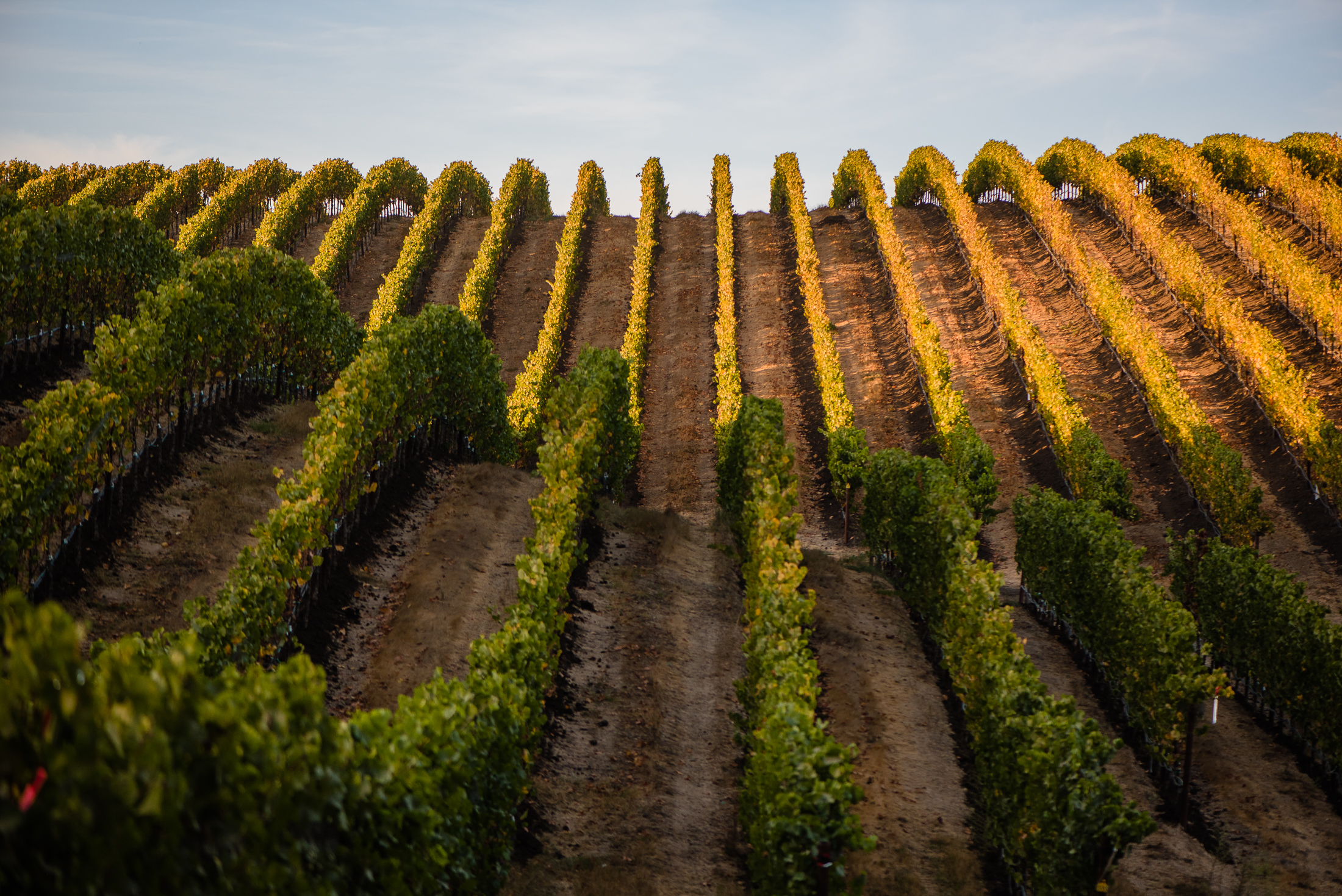
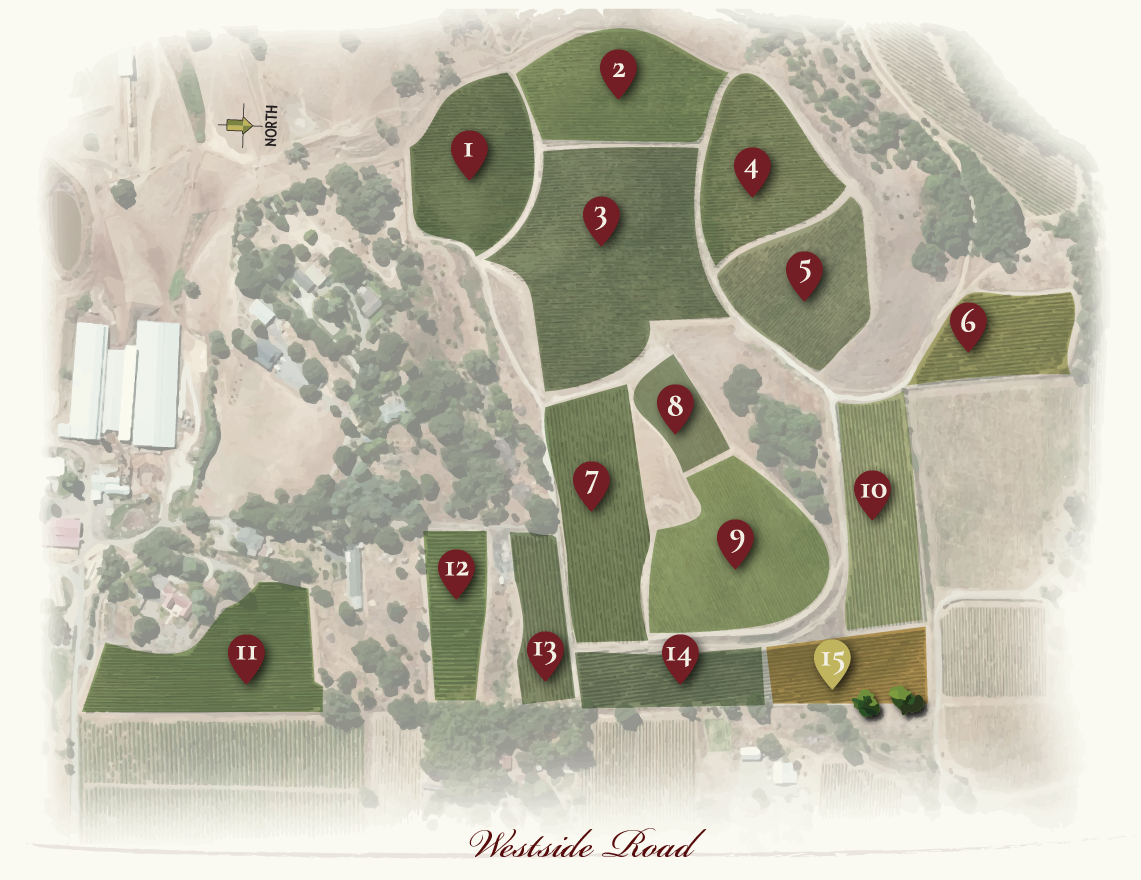
Clones
In the vineyard map above, you’ll see that Joseph Jewell sources grapes from block 3 and block 11. We selected these blocks to create a balanced wine. They each offer different attributes of Pinot Noir clones that are harmonious when blended together. You can think of wine grape clones as siblings. Each is related to the parent, Pinot Noir, but they each have their own unique characteristics that give them their personality.
You can think of wine grape clones as siblings. Each is related to the parent, Pinot Noir, but they each have their own unique characteristics that give them their personality.
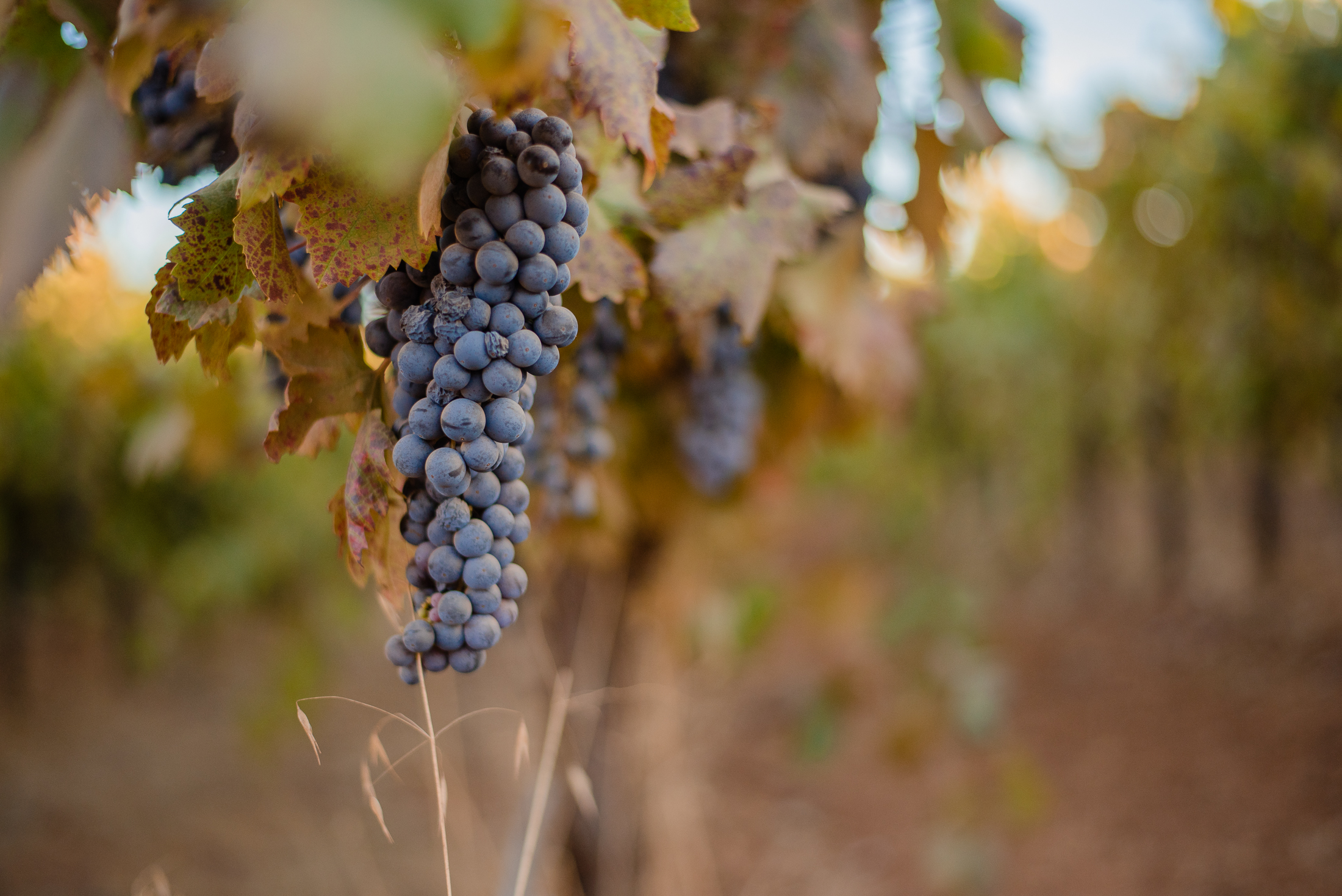 Swan Clone Cluster
Swan Clone Cluster
The Swan clone is planted in block 3. This block is aptly named “Saddle Back” as the vines are planted across the hillside that looks like a horse saddle, or a bell curve. The history of the Swan clone in the Russian River Valley dates back to the mid-1900’s when clippings from grapevines of a vineyard in Burgundy were smuggled in a suitcase to California and planted here in the vineyards. This clone tends to produce grapes a bit lighter in color, more of a brick to ruby red, and has more “rustic” aromatics. Dried fall leaves, red currant, burnt orange peel, pumpkin seed, and black cherry are often tasting notes one can find in a glass of 100% Swan clone Pinot Noir.
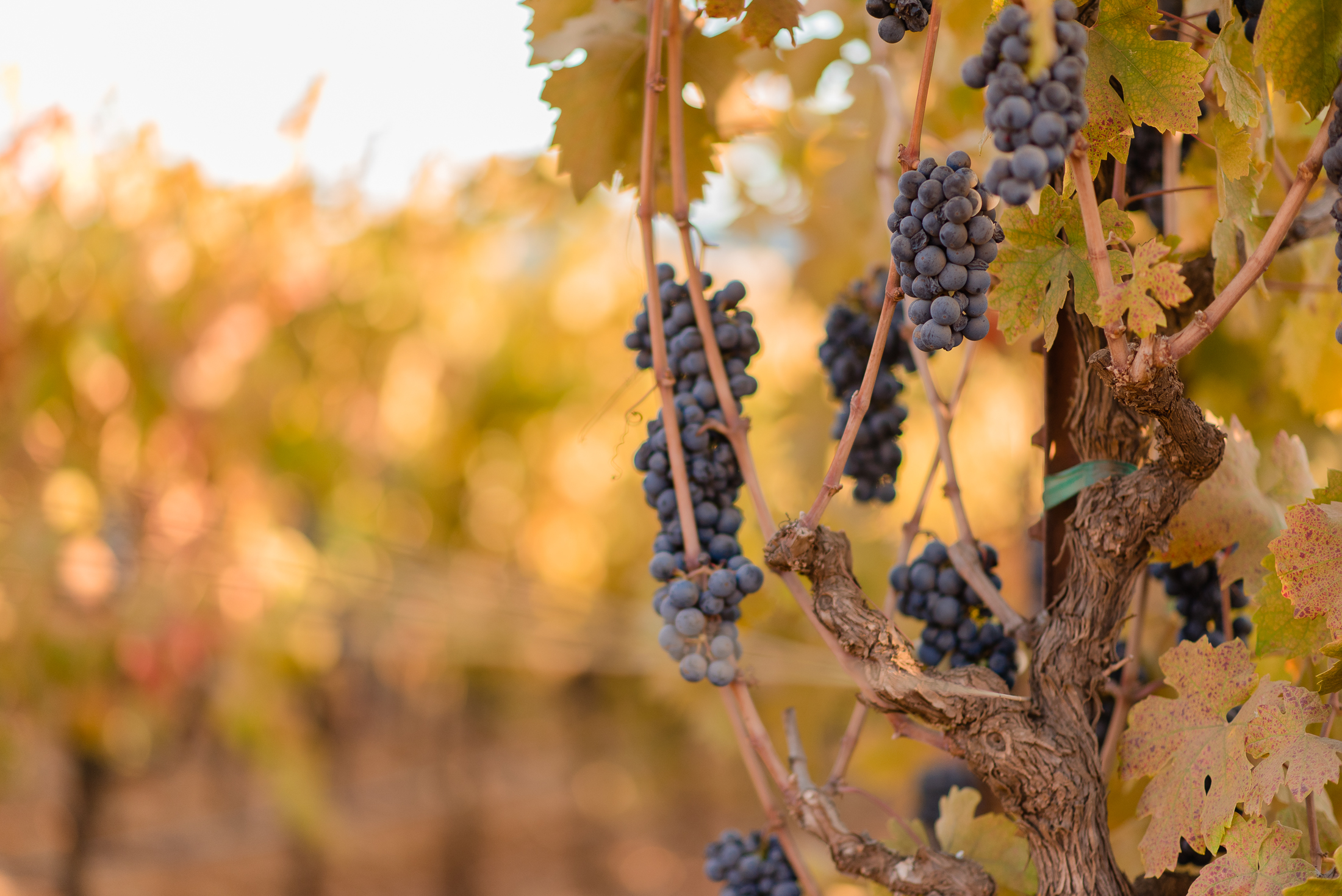 Pommard Clone Clusters
Pommard Clone Clusters
In block 11, which is a slightly cooler block toward the bottom of the hill, the Pommard clone is at home. Pommard has come to be one of the most common Pinot Noir clones planted in the Russian River Valley because of its ability to ripen slowly over time while giving generous color, bold fruit flavors, and its ability to handle the heat.
Like the Swan clone, the Pommard clone has its origins in Burgundy in the village of Pommard. Classically, it makes wines that are darker in color, have a bit more of a tannic structure, are more fruit forward, and age very well. You can expect notes of bing cherry, blackberry, blackcurrant, new leather, fresh potting soil.
Sustainability
At the heart of Bucher Vineyard is the desire to maintain the same organic and sustainable practices used on their farm.
Helicopters came looking for a lake from which to draw water. From the air, my pond looked just like water… so they helped themselves.”
“We sell our manure mostly to vintners and landscape companies,” Joe tells me. “I made the first deliveries in my pickup between milking. Then I had to get a dump truck. Now big trucks come and take it away. Part is in solid form; part is liquid, which we spray on the fields. We can’t have run-off into the river, so we have ponds in the hills, which hold the liquid in winter. Once, a neighbor complained about the smell, but then that particular neighbor had a fire on his ranch. Helicopters came looking for a lake from which to draw water. From the air, my pond looked just like water… so they helped themselves.”
John uses organic compost from the farm in the vineyard. This allows John to introduce micronutrients into the soil that the vines need to produce high-quality fruit. It also allows for less irrigation because the compost acts as a protective mulch under the vines as we drip irrigate. The combination of water conservation and soil amendment helps produce superior quality Russian River Valley Pinot Noir.
